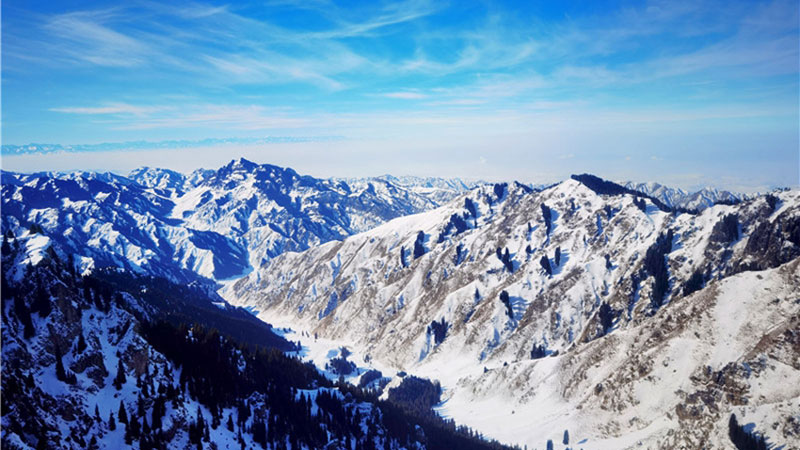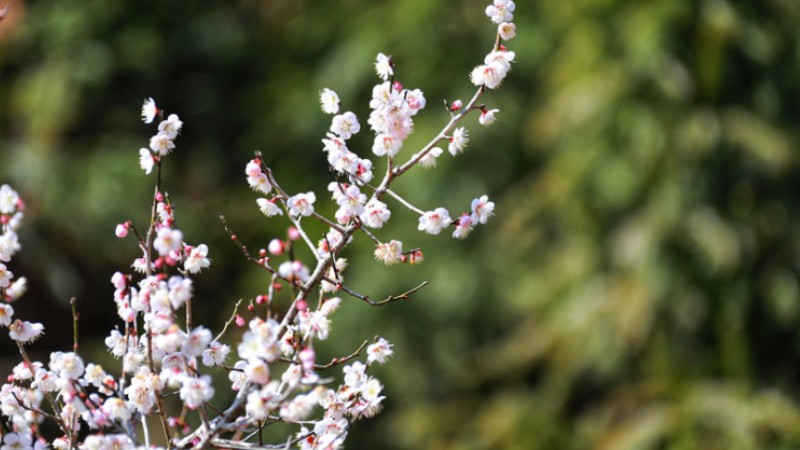"Water tower" witnesses China's decades-long ecological efforts
XINING, Feb. 1 (Xinhua) -- On a piercing cold day just after the Spring Festival holiday, Nyedo and six of his fellow villagers mounted their motorcycles to start an early morning patrol.
Nyedo, a herdsman in Chumarle County, Yushu Tibetan Autonomous Prefecture in northwest China's Qinghai Province, has been patrolling the headwaters of the Yellow River for more than seven years.

Rangers patrol the core area of Sanjiangyuan National Park in Yushu Tibetan Autonomous Prefecture, northwest China's Qinghai Province, April 21, 2022. (Xinhua/Zhang Long)
"Although it's freezing now, it's a good time to patrol the wetland and grassland, which are inaccessible in summer and autumn," said Nyedo.
The land Nyedo patrols was once the core area of the Sanjiangyuan National Nature Reserve, later designated as Sanjiangyuan National Park and now under strict protection.
The Sanjiangyuan area, known as China's "water tower," contains the headwaters of the Yangtze, Yellow and Lancang rivers. At an average altitude of more than 4,700 meters, Sanjiangyuan National Park is the world's highest national park covering a total area of 190,700 sq km.
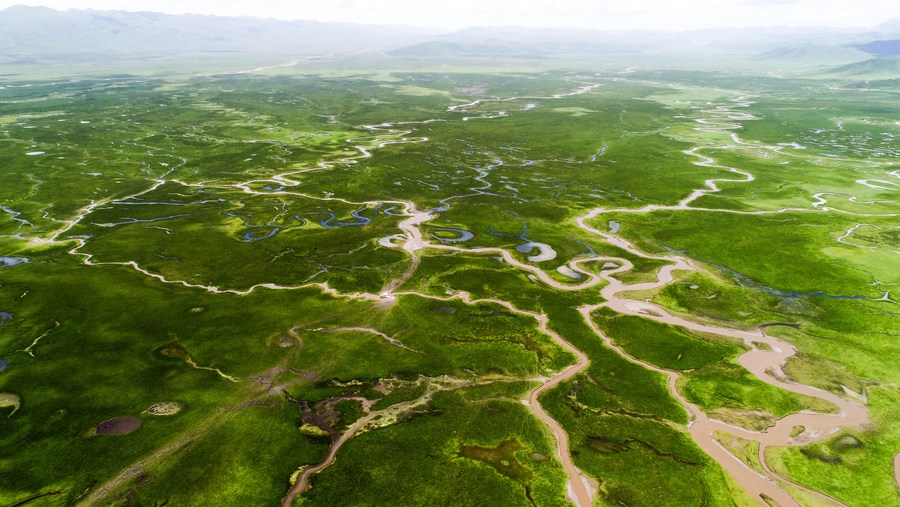
This photo taken on June 28, 2020 shows the Sanjiangyuan National Park in northwest China's Qinghai Province. (Sanjiangyuan National Park Administration/Handout via Xinhua)
This year marks the 20th anniversary of the establishment of the Sanjiangyuan National Nature Reserve. After decades of painstaking exploration and practice, Sanjiangyuan embodies the historic reform and achievements of China's ecological civilization system.
ARDUOUS EFFORTS
As an ecological conservator who grew up at the headwaters of the Yellow River, Nyedo has a keen understanding of the importance of ecology.
"The ecological environment and grassland here deteriorated when I was a child. My family had to travel as far as 2 km to find drinkable water," said Nyedo.
On Jan. 24, 2003, the State Council officially approved the establishment of the Sanjiangyuan National Nature Reserve in Qinghai. Two years later, the ecological protection and construction of the Sanjiangyuan area began.
Over the following decade, China accelerated preparations for the establishment of a national park system. It began the pilot operation of Sanjiangyuan National Park in 2016, and in October 2021, the park received its official designation.
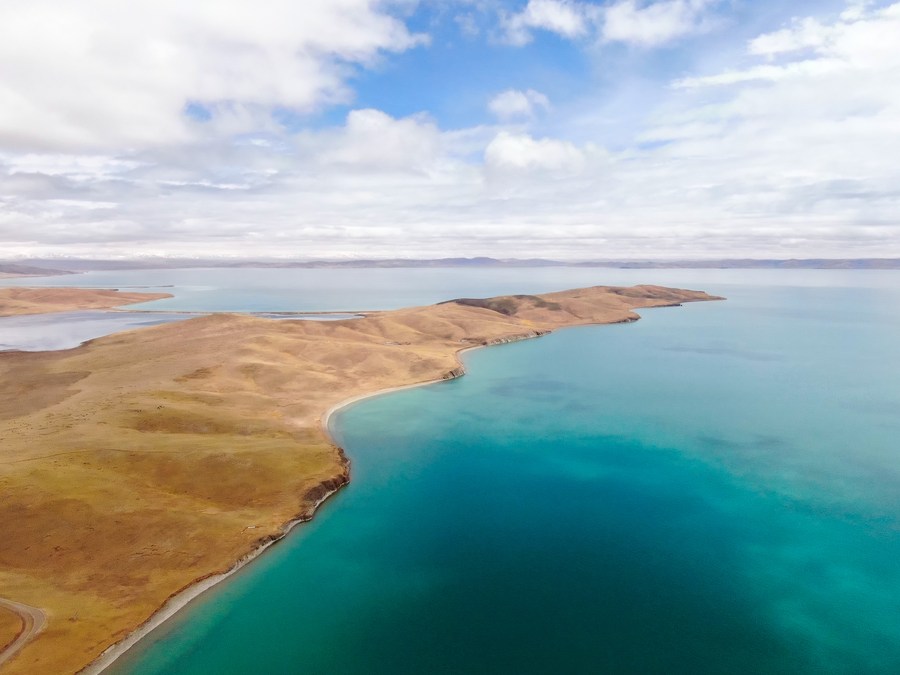
This aerial photo taken on May 25, 2021 shows a view of Ngoring Lake at the Yellow River source area of the Sanjiangyuan National Park in northwest China's Qinghai Province. (Xinhua/Li Zhanyi)
"The Chinese government attaches great importance to the ecological conservation of Sanjiangyuan," said Li Xiaonan, director of the Qinghai provincial forestry and grassland administration, who has witnessed every step of Sanjiangyuan's ecological construction. "The successful operation of Sanjiangyuan National Park provides an excellent model for the country's national park construction," said Li.
Building up a national park means implementing the strictest protection for Sanjiangyuan's ecology.
Qinghai Province has optimized the functions of protected areas within the Sanjiangyuan National Park, including nature reserves, wetlands, scenic spots and natural heritage sites. The management bureau of Sanjiangyuan National Park was set up to assume responsibility for ecological protection and management, which had previously been scattered between the departments of forestry, environmental protection, water conservancy, agriculture and animal husbandry, among others.
A new ecological protection management system has been established in the four county-level areas where the national park is located, with the management bureau as the leader and the villages working under its guidance.
Grassroots officials in the national park said the ecological conservation in Sanjiangyuan has been strengthened with improvements to the system.

In this aerial photo, rangers patrol in the Sanjiangyuan National Park in Golog Tibetan Autonomous Prefecture, northwest China's Qinghai Province, Oct. 20, 2021. (Xinhua/Zhang Long)
Last year, the Sanjiangyuan National Park invested nearly 320 million yuan (about 47.41 million U.S. dollars) in ecological protection and restoration projects. From 2016 to 2021, with a total investment of 6.7 billion yuan, the park carried out a series of infrastructure construction, ecological protection and restoration projects, said Wang Xiangguo, director of the management bureau of Sanjiangyuan National Park.
When delivering a government work report in January, Wu Xiaojun, governor of Qinghai, said that Qinghai has become the only province in China in which 100 percent of river sections show good water quality in national assessments. The share of days with good air quality has reached over 96 percent in the province, with the comprehensive vegetation coverage of grassland reaching 57.9 percent.
WIN-WIN RESULTS
The decades of arduous efforts have boosted local biodiversity as well as people's awareness of ecological protection.
Deng Haiping welcomed the Chinese Lunar New Year with the Tibetan antelopes in the wildlife rescue center in Hoh Xil. As a staff member of Hoh Xil management office under the management bureau of Sanjiangyuan National Park, he volunteered to stay on duty this Spring Festival. It was his third New Year's Eve in Hoh Xil.
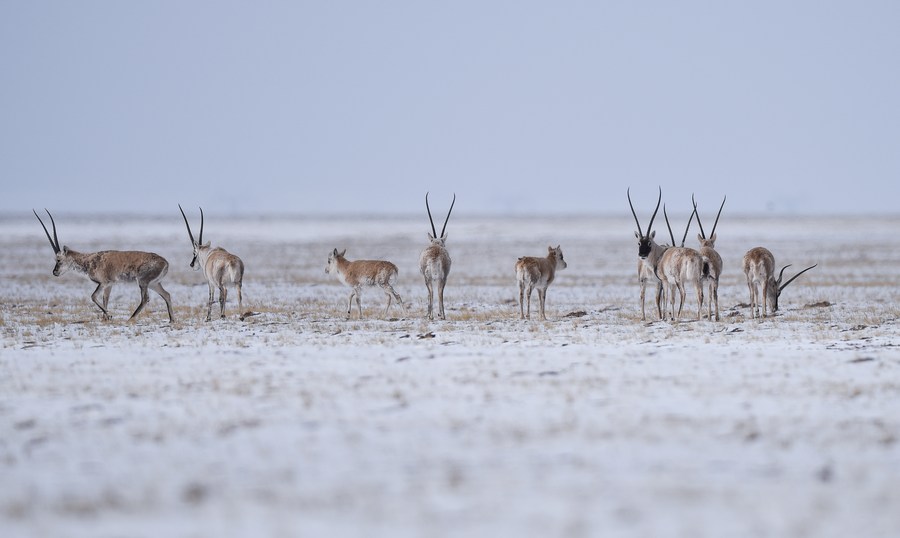
This photo taken on April 20, 2021 shows Tibetan antelopes in the Sanjiangyuan area in northwest China's Qinghai Province. (Xinhua/Wu Gang)
Deng and his colleagues start patrolling the park at about 8 a.m. every morning, protecting the wild animals in the national park from illegal hunting. Besides the daily patrols, Deng now has another routine job -- feeding the Tibetan antelope calves that have been saved and sent to the rescue center.
"In the morning, we give them warm milk, and then patrol around the fence," said Deng. "Sometimes we hold the calves in our arms like a baby. We're really happy to see them thrive."
During the 1980s and 1990s, due to poaching sprees, the population of Tibetan antelopes in Hol Xil dropped to less than 20,000. Thanks to the country's active anti-poaching and biodiversity protection efforts in recent years, Hoh Xil is now home to more than 70,000 Tibetan antelopes. The status of Tibetan antelopes in China has been downgraded from "endangered" to "near threatened."
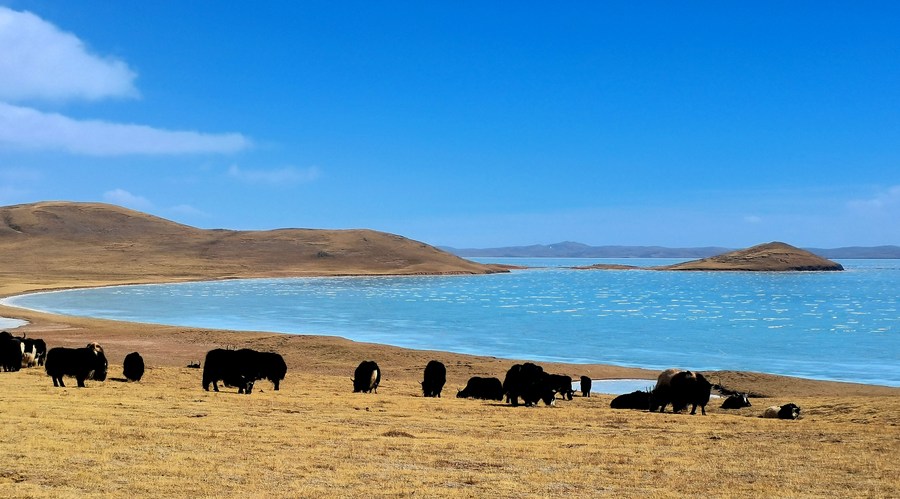
This photo taken on March 12, 2022 shows the view of Gyaring Lake at the Yellow River source area of Sanjiangyuan National Park in northwest China's Qinghai Province. (Xinhua/Lyu Xueli)
Since 2016, the Sanjiangyuan National Park has also integrated ecological protection with improvements to local people's livelihoods.
"As the ecology improves, our life will get better," said Samdrup, whose family has been herding cattle for generations in Namse Township of Yushu, through which the Lancang River flows.
Starting in 2019, the township piloted a franchise business model for tourism. Some herders, including Samdrup, began serving as ecology guides, taking tourists to watch wild animals and experience life in pastoral areas.
"With the ecological environment improved, wild animals, such as snow leopards and white-lipped deer, have often been recorded through the lens of cameras," Samdrup said.
Last year, Samdrup's family received three groups of tourists, and earned more than 10,000 yuan in just three months.
"In March, the first batch of visitors this year will come to my home. I have found some places where snow leopards often hang out. It will definitely be worth the trip for the shutterbugs," Samdrup said.
Photos
Related Stories
- China accelerates legislation on ecological conservation: report
- China's Northeast Tiger and Leopard National Park reports remarkable achievements in ecological conservation
- China's Yellow River basin sees remarkable improvement in ecological conservation
- Experts worldwide hail China's ecological conservation and appeal for more global cooperation
- Chinese top legislator stresses ecological conservation at global forum
Copyright © 2023 People's Daily Online. All Rights Reserved.






